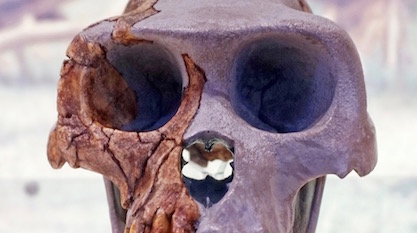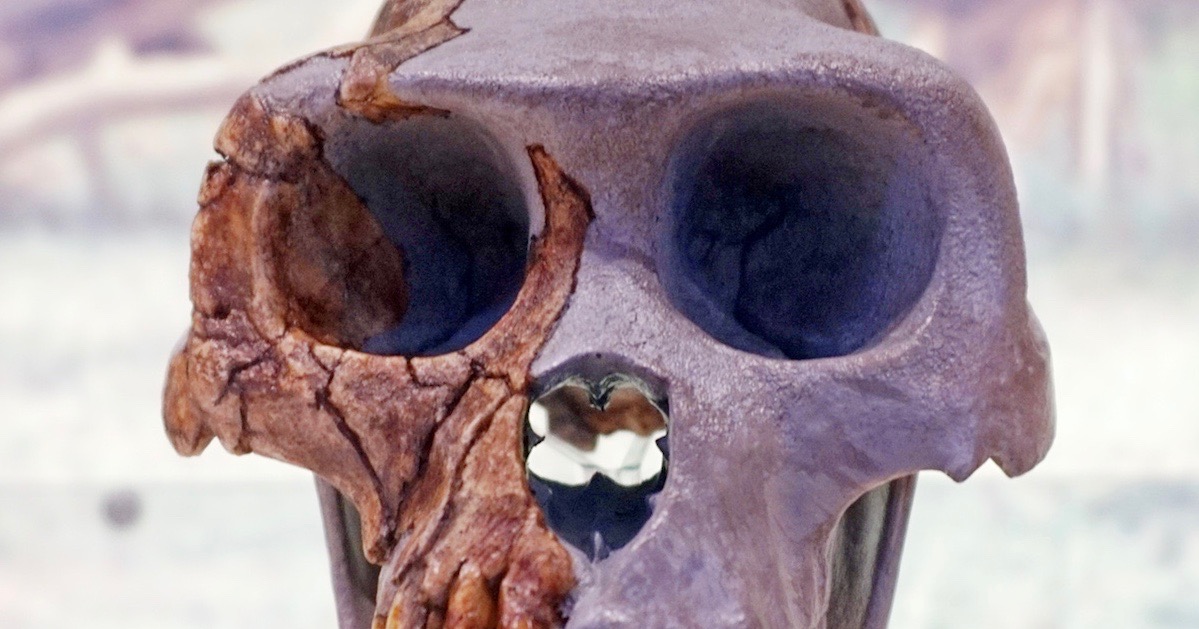 Human Origins
Human Origins
Adam and the Genome and Hominid Fossils


In his book Adam and the Genome, which we’ve been considering here, biologist Dennis Venema attempts to show that a traditional Adam and Eve did not exist. Instead, humans evolved, like any other species:
The evidence thus suggests that our lineage over the past 4 million years passed through an Ardipithecine-like species, on to an Australopithecine-like species, and then through various shades of Homo until our species is first preserved in the fossil record 200,000 years ago.
(Adam and the Genome, p. 59)
But in Science and Human Origins, Casey Luskin reviewed the fossil evidence including Ardipithecus and Australopithecus and showed:
Hominin fossils generally fall into one of two groups: ape-like species and human-like species, with a large, unbridged gap between them. Despite the hype promoted by many evolutionary paleoanthropologists, the fragmented hominin fossil record does not document the evolution of humans from ape-like precursors.
(Science and Human Origins, p. 45)
Adducing numerous authorities, the book showed that hominid fossils
…fall into two basic categories: ape-like fossils, and Homo-like fossils. This discontinuity between fossil types is well-known. Nonetheless, the hominin fossils have been interpreted as historical, physical evidence of our common ancestry with apes. Ernst Mayr, a well-known evolutionary biologist, acknowledged both the gap and the story-telling in his book What Makes Biology Unique:
“The earliest fossils of Homo, Homo rudolfensis and Homo erectus, are separated from Australopithecus by a large, unbridged gap. How can we explain this seeming saltation? Not having any fossils that can serve as missing links, we have to fall back on the time-honored method of historical science, the construction of a historical narrative.”
(Science and Human Origins, p. 17)
As for Ardipithecus, a fossil noted by Venema, Luskin cites authorities pointing out that this fossil was highly fragmented. This condition makes it difficult to establish whether it walked upright like humans, and, indeed, quite a few authorities believe it was not on the line that led to humans. Moreover, Luskin lists many differences between the australopithecines and our genus Homo, and he cites many authorities who have recognized this gap. Our old friend Casey documented all this and more in a range of articles online:
Ardipithecus as an unlikely human ancestor:
- “The Fragmented Fossil Record of Early Hominins”
- “Another Scientific Paper Challenges Ardi’s Place as a Bipedal Human Ancestor”
- “Nature Publishes Paper Critical of Ardi’s Status as Human Evolutionary Ancestor”
- “Is ‘Ardi’ All Washed Up? (Updated)”
For problems with citing the australopithecines as human ancestors or intermediates:
- “Later Hominins: The Australopithecine Gap”
- “My Pilgrimage to Lucy’s Holy Relics Fails to Inspire Faith in Darwinism”
The abrupt appearance of humans:
- “A Big Bang Theory of Homo”
- “Professor Who Indoctrinates Students on Human Evolution Pushes Them Away from Science”
Casey Luskin has a more extensive treatment of this subject in a chapter, “Missing Transitions: Human Origins and the Fossil Record,” in the recent book Theistic Evolution: A Scientific, Philosophical, and Theological Critique. There, he writes:
The standard evolutionary view of human origins — generally accepted by theistic evolutionists — holds that our species, Homo sapiens, evolved from apelike species through apparently unguided evolutionary processes like natural selection and random mutation. Theistic evolutionists and other evolutionary scientists often claim the fossil evidence for this Darwinian evolution of humans from ape-like creatures is incontrovertible. But their viewpoint is not supported by the fossil evidence. Hominin fossils generally fall into one of two groups: ape-like species and human-like species, with a large, unbridged gap between them. Virtually the entire hominin fossil record is marked by fragmented fossils, especially the early hominins, which do not document precursors to humans. Around 3 to 4 million years ago, the australopithecines appear, but they were generally ape-like and also appear in an abrupt manner. When our genus Homo appears, it also does so in an abrupt fashion, without clear evidence of a transition from previous ape-like hominins. Major members of Homo are very similar to modern humans, and their differences amount to small-scale microevolutionary changes. The archaeological record also shows an “explosion” of human creativity about thirty to forty thousand years ago. Despite the claims of evolutionary paleoanthropologists and the media hype surrounding many hominin fossils, the fragmented hominin fossil record does not document the evolution of humans from ape-like precursors, and the appearance of humans in the fossil record is anything but a gradual Darwinian evolutionary process. … [T]wo top paleoanthropologists have admitted that “the evolutionary sequence for the majority of hominin lineages is unknown.” With the fossil evidence for human evolution so weak, why should our theistic evolutionist brothers and sisters insist that the church must adopt their viewpoint?
So, despite Dennis Venema’s statements to the contrary, there is no clear-cut lineage of fossils leading from ape-like hominids to modern humans. Want to learn more? A good place to start is here: “Human Origins and the Fossil Record: What Does the Evidence Say?”
Photo: Ardipithecus ramidus, reconstruction, National Museum of Natural Sciences, Spain, by Tiia Monto [CC BY-SA 3.0], via Wikimedia Commons.
